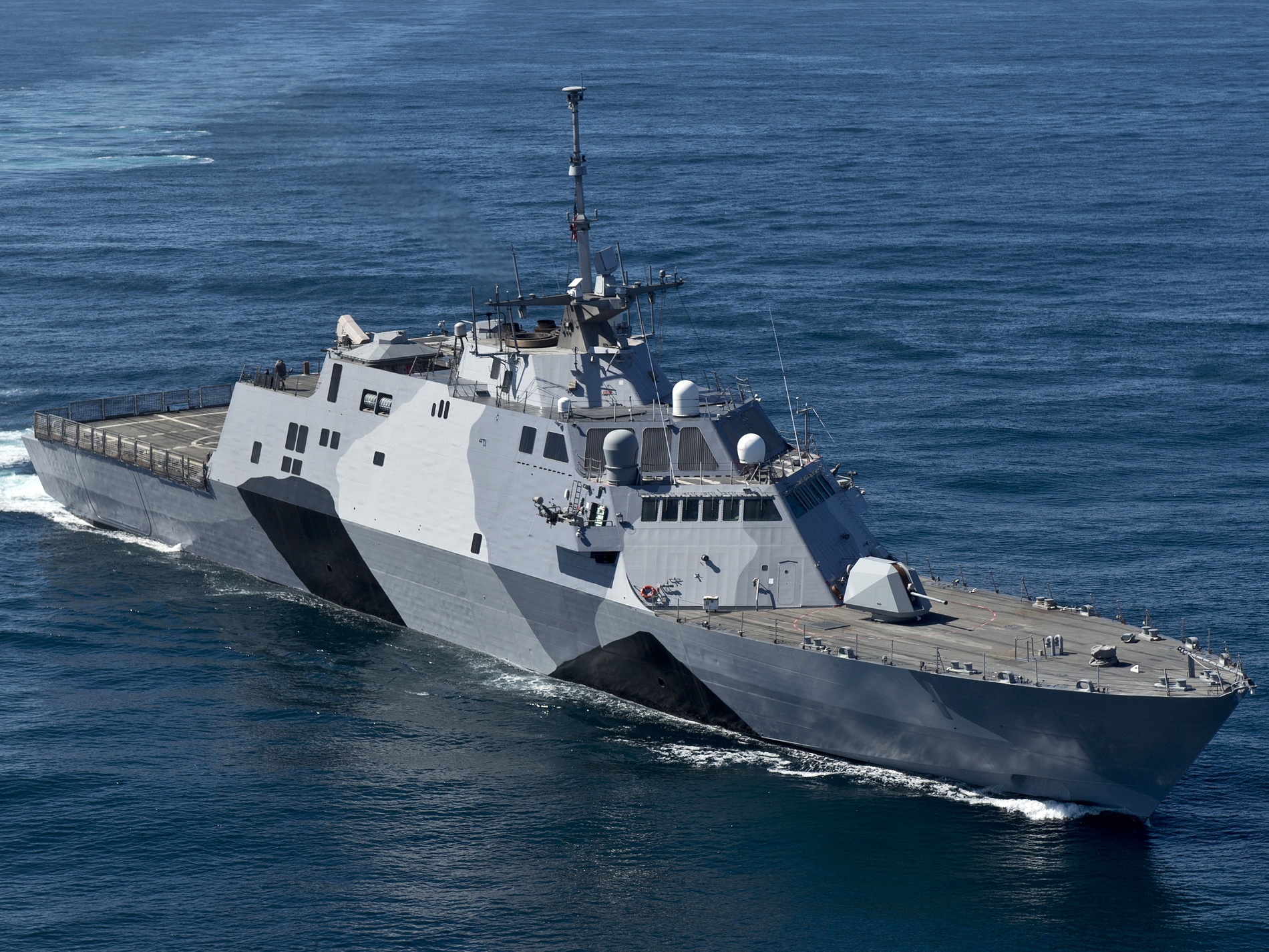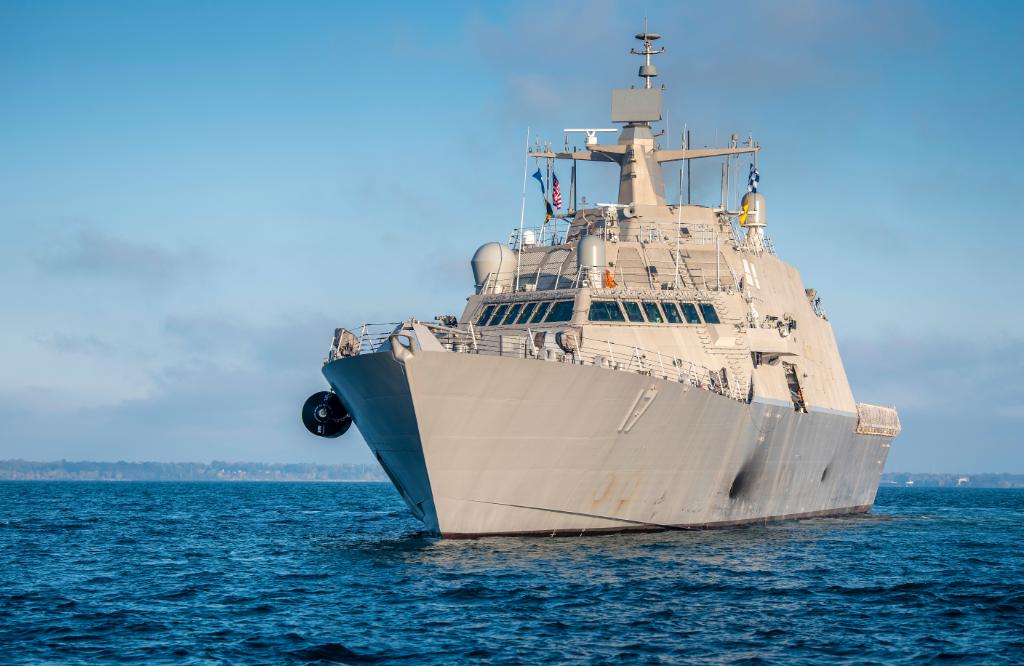At a time when the US has acknowledged that it has fewer ships compared to its rival China, America’s naval chief Admiral Michael Gilday told the House Armed Services Committee that about nine ships should be scrapped, some of which were commissioned very recently.
Dramatic Footage Of Russian Tank Exploding & Its 12-Ton Turret Rocketing ‘High In The Sky’ Goes Viral — Watch
Admiral Gilday justified the plans to discard nine relatively new warships in the 2023 fiscal year despite trying to outmatch China’s burgeoning fleet. Three of the littoral combat ships that are proposed to be decommissioned are just three years old.
Admiral Gilday told the House Armed Services Committee that the anti-submarine ships could not perform their primary job.
“I refuse to put an additional dollar against a system that would not be able to track a high-end submarine in today’s environment,” Gilday said.

According to the Navy’s projected FY23 budget, retiring the ships will save the service about $391 million. However, this would only cover a small portion of the $3.2 billion costs of the nine littoral combat ships.
Having said that, the US Navy intends to decommission the warships to allocate resources for investing in a more robust and combat-ready fleet.
“The US Navy cannot outpace an increasingly capable PRC by retaining platforms that are decreasingly relevant in modern naval warfare.
Blasting Its 2nd Hypersonic Missile Prototype — Will US Now Have The ‘Real Ones’ To Challenge China & Russia?
While some of these platforms may have day-to-day utility in permissive environments, the Navy’s first obligation is to deliver a ready, combat-credible fleet with the funding Congress appropriates. Simply maintaining the capabilities of today’s fleet will be insufficient to both preserve our long-term interests and protect America. Quantity is not synonymous with quality. We must modernize to maintain our maritime edge”, said Admiral Gilday.
The USS Indianapolis, USS Billings, and USS Wichita were all commissioned in 2019, which indicates that ships that are barely halfway through their anticipated service lives are to be sent to the scrap.
USS Wichita had conducted a bilateral maritime interdiction with the Dominican Republic earlier this month.
The Freedom-variant littoral combat ship USS Wichita (LCS 13) and the Dominican Republic navy conducted a bilateral maritime interdiction exercise off the coast of Santo Domingo, May 5, 2022.
Read more: https://t.co/c2MsOSlznP pic.twitter.com/1us2S3Ag44
— U.S. Navy (@USNavy) May 10, 2022
Additionally, the US Navy intends to decommission six more littoral combat ships, all of which are single-hull Freedom variants rather than the trimaran Independence variants. Both the variants can reach speeds of more than 40 knots (74 kilometers per hour).
The Freedom-class variants were all homeported in Mayport, Florida, according to a 2016 Navy plan, and were mostly used in Atlantic Ocean missions, while the Independence-class ships were based in San Diego and primarily used in the Pacific.
The US Navy describes the Littoral Combat Ship (LCS) as a type of Small Surface Combatant that is meant to enable access to joint forces in the littorals. LCS can operate independently or as part of a networked battle force that comprises larger, multi-mission surface fighters in high-threat settings.
The decision is an embarrassing acknowledgment that some of the Navy’s newest ships aren’t up to the task of contemporary warfare.
Scrapping Littoral Combat Ships
Despite the Navy’s plan to demolish the vessels, Congress has the ultimate authority over the military budget and has previously rejected pleas to decommission warships.
As politicians focus on countering China’s ever-increasing navy and narrowing the gap between the US and Chinese fleets, scrapping the warships may become even more difficult.
‘An Engine That Does Not Work’: F-35 Program Office Lambasted For Stealth Jets Poor Performance
US Navy Chief Admiral Michael Gilday had earlier said that China is an impressive military adversary that is constantly developing and achieving its goals years ahead of schedule, putting the US Navy under pressure to respond effectively to the mounting threat, as previously noted by EurAsian Times.
China has around 355 ships, including major maritime warships, submarines, aircraft carriers, amphibious ships, minesweepers, and other auxiliary ships, making it the world’s largest fleet by fleet size, as the US has confirmed.
With China’s naval fleet only growing by the day, it could be an uphill task to convince Congress for decommissioning the Freedom-class Littorals.

The LCS program, which began in February 2002, represents a significant reduction in the time it takes to acquire, design, and build ships when compared to any preceding ship class. However, the beleaguered littoral combat ships have been plagued by issues such as recurring malfunctions and concerns over their weak armament.
Since the ships were built to operate in shallow waters like the South China Sea, they were welcomed as part of the US deterrent against China.
However, decommissioning so many in a single year appears to be an admission that the costly surface combatants have acutely fallen short of expectations.
Rep. Adam Smith, chair of the House Armed Services Committee, said, “We can’t use them, number one, because they’re not ready to do anything. Number two, when they are, they still break down.”
“They’re incredibly expensive, and they don’t have the capabilities that we expected. So regardless of how old they are, that’s a lot of money to be spent to get pretty close to nothing,” the Washington state Democrat continued.
At a news briefing in mid-April, Pentagon press secretary John Kirby defended the program and the ships, claiming that “they served a function.”
Despite the Navy’s plans to demolish nine Freedom-variant ships, the class’s newest ship was just christened last weekend. Members of Congress and Navy officials were on hand to commemorate the occasion, which included the customary breaking of a bottle of wine across the bow.
According to Emma Salisbury, a University of London scholar who studies US military weapons manufacturers, many of the littoral combat ship program’s difficulties arise from a lack of mission focus during the design process.
The LCS Independence version has had its own set of issues. According to a statement from Alan Baribeau, a spokesperson for Naval Sea Systems Command, the Navy has discovered structural cracks on six of these ships, necessitating modifications to inspection protocols and a redesign of the damaged sections.
According to Navy Times, the fissures were first identified in late 2019 in high-stress regions on the ship’s structure.
With China’s fleet growing by leaps and bounds, there is an urgent need in Washington to ramp up its capabilities — either by keeping more ships in the fleet or downsizing it to make way for better ones. The ultimate decision depends on the discretion of the lawmakers.
- Contact the author at sakshi.tiwari9555@gmail.com
- Follow EurAsian Times on Google News




